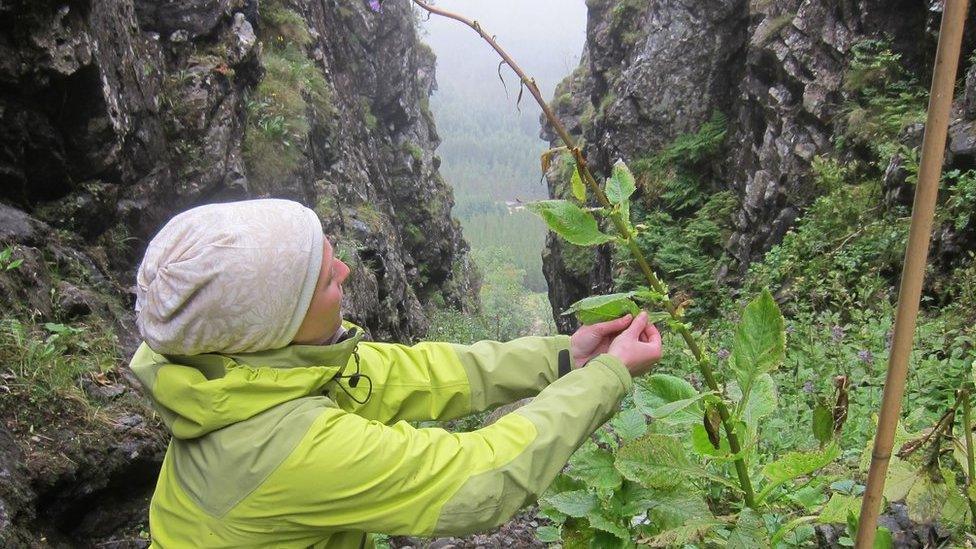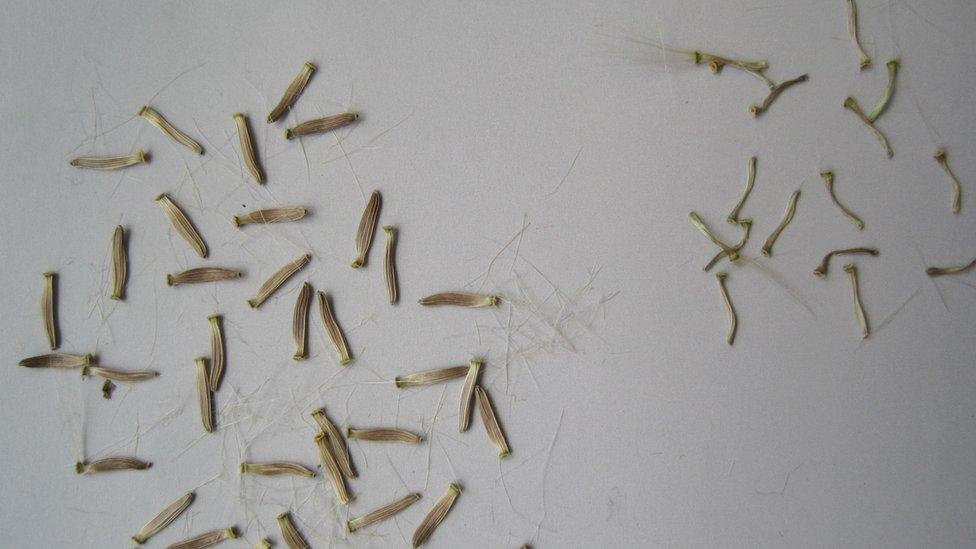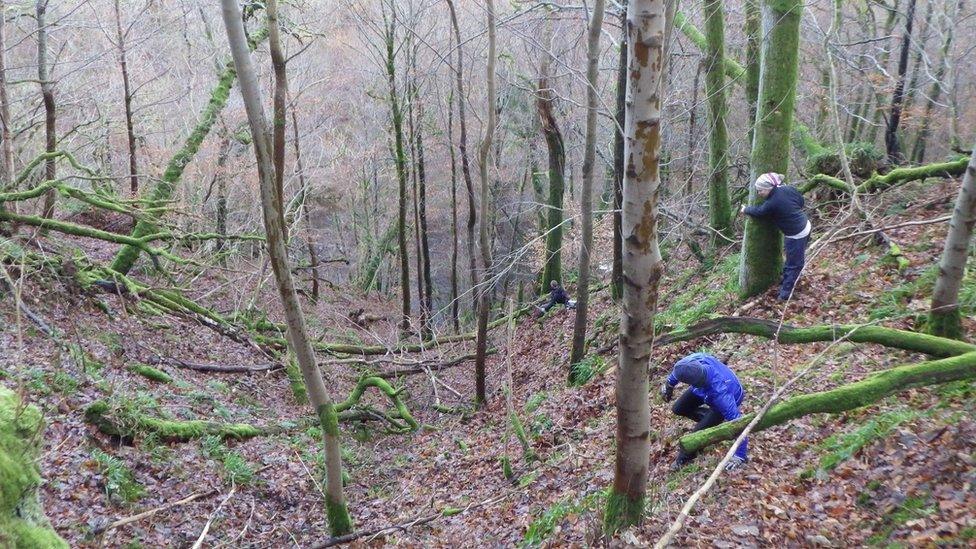Search for locations of rare plants in Scotland's hills
- Published

Alpine blue-sowthistle is the rarest and hardest to find of the three target species
Conservationists are trying to find out where three rare and endangered species of plants grow in Scotland.
Alpine blue-sowthistle, tufted saxifrage and alpine sulphur tresses are protected by law because of the threat of their extinction in the UK.
Climbers and hillwalkers have been asked to look out for the plants.
They have been asked to note the grid reference or GPS coordinates of where they find them, and take a photograph if safe to do so.
'Bear-hay'
Royal Botanic Garden Edinburgh (RBGE) is working with Mountaineering Scotland on the project, external.
Alpine blue-sowthistle, which has violet-blue flowers, is known as "bear-hay" in Finland because brown bears have been known to eat it.
In the UK, only four populations of alpine blue-sowthistle are known to survive and all are in Scotland, and all are located on remote and difficult to access mountain cliffs.
RBGE has been collecting seeds from the plants in an effort to save the species.
Tufted saxifrage has been recorded on Ben Alder, Ben Avon, Ben Nevis and in the mountains in Torridon and northern Skye.

Alpine blue-sowthistle have been collected in the wild to grow in RBGE's nursery
Alpine sulphur tresses, a lichen, has been found high in the Cairngorms.
Historically, it has been recorded elsewhere in Scotland, including in Orkney.
The three are the project's target species. RBGE has also been involved in efforts to conserve Whorled Solomon's Seal, a plant only found growing in Perthshire in the UK.
'Highly sensitive'
Dr Christopher Ellis, of RBGE, said seeds from alpine blue-sowthistle had been grown successfully in the garden's nursery.
The health and genetics of the plants can also be tested in the nursery.

Looking for Whorled Solomon's Seal in Perthshire
Dr Ellis said: "This is all working towards unlocking the sowthistle's return to the wild.
"Three new populations have already been established, more will follow, and we can all have renewed hope for the species' future in Scotland."
He added: "Like many rare Scottish plants, it is highly sensitive to grazing, and its future depends on a sustainable approach to the countryside."